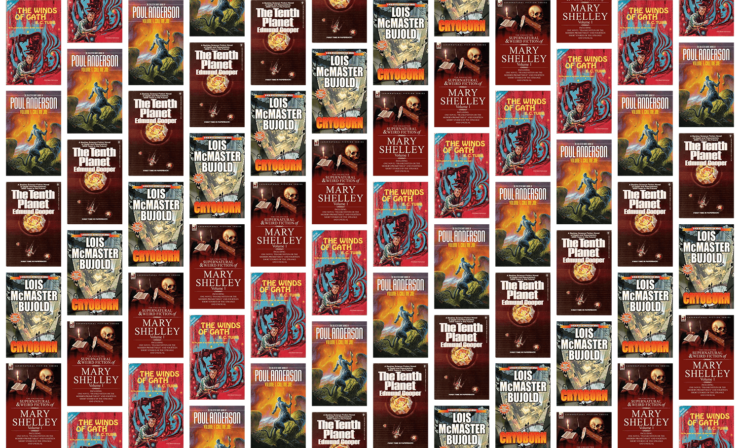Purveyors of cryonic preservation have a problem: As long as customers are content with storing bodies at temperatures cold enough to liquify nitrogen (or colder), all is well. However, as soon as someone starts muttering about the end goal of waking frozen clients, the issue arises that nobody knows how to do that. In fact, freezing itself can damage human cells beyond repair. Humans being less robust than tardigrades, the humans have a deplorable tendency to remain quite dead despite the intense desires of the company that froze them. People are so inconsiderate.
However, even if cryonics were not just an expensive way of storing corpses, it still might be problematic for any number of reasons.
“Roger Dodsworth: The Reanimated Englishman” by Mary Shelley (1863)

Returning from Italy to England in 1654, Roger Dodsworth is buried by an avalanche. Rather than being pulverized, he falls into a state of preservation so perfect that reanimation is a simple matter of retrieving Roger from the snow and warming him up. Finding Roger was the difficult step—by the time he was found, the year was 1826.
What does Roger make of the new world in which he finds himself. Is the old Tory heartened to learn that Cromwell’s Commonwealth is no more, that monarchy once more rules England? Or is he distressed to discover the Stuart dynasty has been replaced by Hanoverian monarchs? Can a man of the past adapt to the futurist world of the 19th century? Or would Roger have been more fortunate to have perished in 1654?
Shelley was inspired by a famous newspaper hoax. The publication of this story was long delayed, by which time readers may well have forgotten the hoax. It is a shame cryopreservation isn’t a matter of well-timed avalanches. Imagine what we might learn from a reanimated Otzi.
“Time Heals” by Poul Anderson (1949)
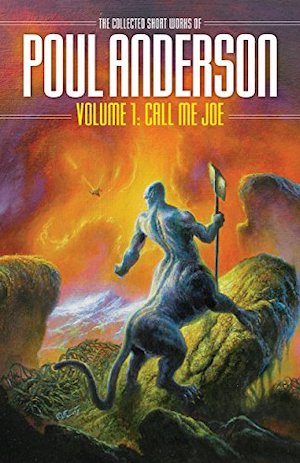
The Seaton effect avoids the issues of cryonics by stopping time itself. A terminally ill person like Hart may step into the field assured that they will be perfectly frozen in a moment of time—the only uncertainties are how long it will take for a cure for a terminal illness to be found, and into what sort of world Hart will emerge. Otherwise, the process is perfectly reliable and perfectly safe.
The good news is that a dystopia would not bother to wake or heal Hart. Hart’s hosts are in almost every respect superior to the people of Hart’s home time. Alas, the one comfort they cannot offer is a rewarding role for a barbarian like Hart to play in this new society. Nor, as it turns out, are they adept at addressing the psychiatric needs of a temporal castaway.
This does not go as well as it might have. Anderson is not the author to turn to for upbeat, happy resolutions. At least, Hart fares far better than the protagonist of another Anderson time castaway tale, “The Man Who Came Early”….
The Winds of Gath by E. C. Tubb (1967)
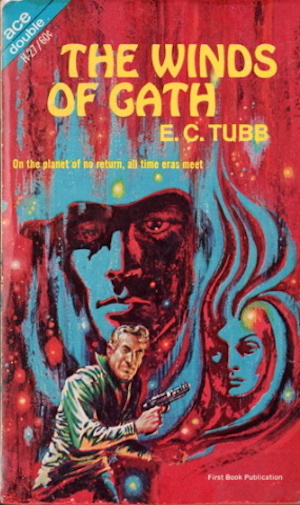
Determined to find his lost homeworld Earth, but financially strapped, interstellar traveller Dumarest has no choice but opt for Low Passage. Cold sleep is physically demanding, with a one in six chance of killing the sleeper. Low is also inexpensive, the only option Dumarest can afford.
Dumarest wakes to discover an unforeseen hazard of Low. He embarked intending to travel to thriving Broome. Dumarest wakes to discover the ship had been redirected to Gath, a backwater world offering few opportunities to earn passage off-world. Has Dumarest’s quest for Earth ended in this, the first of thirty-three novels?
It’s best not to do the math on “if Dumarest has a one in six chance of dying each time he travels in Low, what are the odds he survives thirty-three trips?” The venerable tabletop roleplaying game Traveller borrowed the concept of Low Passage, but players may be better at math than pulp heroes, as I rarely saw a player character actually risk it.
The Tenth Planet by Edmund Cooper (1973)
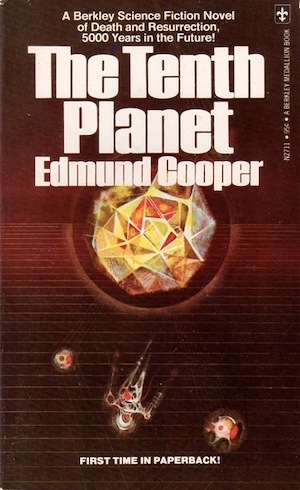
Industrial exuberance leads to ecological collapse. A small handful attempt to survive by fleeing to the Moon and Mars. Idris Hamilton’s command, the Dag Hammarskjold, is sabotaged by Terrestrial spoilsports who cannot bear to see others escape while they perish. Idris, his crew, and his passengers die immediately when the Dag Hammerskjold explodes.
Five thousand years later, Idris is restored to life on the icy world Minerva. Idris soon discovers there is no place for a relic like him on conservative, repressed Minerva, whose society is determined to avoid the self-inflicted suicides of Earth, the Moon, and Mars. Having repented of their decision to revive Idris, the Minervans seek an excuse to exile Idris to Minerva’s inhospitable surface. Idris is doomed, unless Earth is not quite as dead as feared, and if Idris can somehow reach it.
To be as charitable as possible, Idris is a nasty, abusive sexist and having him as the protagonist greatly undermines the thesis that it is the Minervans who are in the wrong. On the plus side, if I’m ever forced to assemble a list of protagonists who rated dead women by their bra size, Idris would be an obvious choice.
Cryoburn by Lois McMaster Bujold (2010)
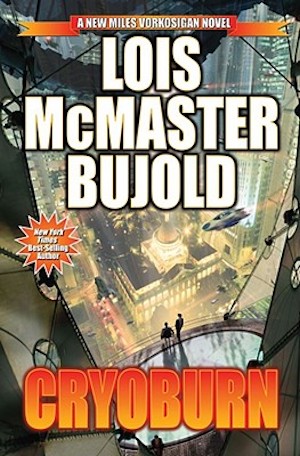
Dispatched to Kibou-Daini to assess the accuracy of Emperor Gregor’s suspicions concerning White Chrysanthemum Cryonics Corporation’s proposal to open a facility on Komarr, Miles Vorkosigan is no sooner offered a very promising bribe than he is targeted for kidnapping by local terrorist/freedom fighters New Hope Legacy Liberators. An atypical reaction to the kidnapper’s drugs sends a manic, delusional Miles scampering through an unfamiliar city. Rescue by a helpful local only brings further complications. As one should expect with Miles.
Surely Bujold’s characters should know by now that involving Miles in anything produces zany, unpredictable outcomes. But the New Hope Legacy Liberators do not seem overburdened with competence.
***
Suspended animation via whatever means is a story-rich premise, which is why the genre goes back centuries (hello, the Seven Sleepers!). Thus, there are many works I could have used, works that I passed by. Feel free to offer your own choices in comments below.
In the words of fanfiction author Musty181, four-time Hugo finalist, prolific book reviewer, and perennial Darwin Award nominee James Davis Nicoll “looks like a default mii with glasses.” His work has appeared in Interzone, Publishers Weekly and Romantic Times as well as on his own websites, James Nicoll Reviews (where he is assisted by editor Karen Lofstrom and web person Adrienne L. Travis) and the 2021, 2022, and 2023 Aurora Award finalist Young People Read Old SFF (where he is assisted by web person Adrienne L. Travis). His Patreon can be found here.










